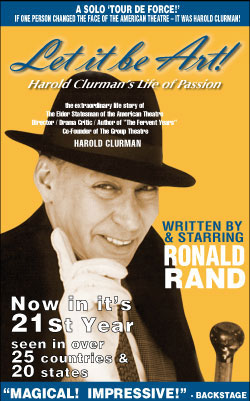Michael Shane Neal
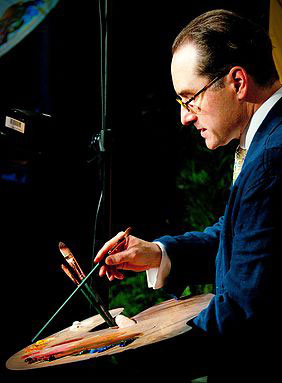 Began his career as an artist at the age of 21, and has completed nearly five hundred portraits on display around the country. His painting of Senator Arthur Vandenberg for the U. S. Capitol, was the first commission of its kind in nearly 50 years. Mr. Neal is among the youngest artists ever commissioned by the U. S. Senate. His recent portraits include Supreme Court Justice Sandra Day O’Connor, former Secretary of Energy Spencer Abraham, former Secretary of the Interior Dirk Kempthorne, U.S. Senators Arlen Specter, Robert C. Byrd, Bill Frist, Federal Chief Judge Anthony Scirica, Sir Malcolm Colquhoun of Luss, Scotland, and Morgan Freeman. A protégé of America’s most celebrated figurative and portrait painter, Everett Raymond Kinstler, his work has been featured in “American Artist,” “International Artist,” “Sketchbook,” “The Artist’s Magazine,” “Art News,” “Fine Art Connoisseur,” “Art Collector Magazine,” and “Nashville Arts Magazine.” He received the Grand Prize in the 2001 Portrait Society of America International Portrait Competition, the National Arts Club’s Catherine Lorilland Wolfe Award, the Audubon Artist’s Tara Fredrix Award, and the Artist’s Magazine Award of Excellence at the 2004 Oil Painters of America National Exhibition. An Exhibiting Artist member of the National Arts Club, the Allied Artists of America, the Artist Fellowship, the Cumberland Society of Painters, the Audubon Artists, the Salmagundi Club of New York, the Lotos Club of New York, the Sloane Club of London, Mr. Neal is a member of the Board of Directors of the Portrait Society of America and Cheekwood Museum of Art.
Began his career as an artist at the age of 21, and has completed nearly five hundred portraits on display around the country. His painting of Senator Arthur Vandenberg for the U. S. Capitol, was the first commission of its kind in nearly 50 years. Mr. Neal is among the youngest artists ever commissioned by the U. S. Senate. His recent portraits include Supreme Court Justice Sandra Day O’Connor, former Secretary of Energy Spencer Abraham, former Secretary of the Interior Dirk Kempthorne, U.S. Senators Arlen Specter, Robert C. Byrd, Bill Frist, Federal Chief Judge Anthony Scirica, Sir Malcolm Colquhoun of Luss, Scotland, and Morgan Freeman. A protégé of America’s most celebrated figurative and portrait painter, Everett Raymond Kinstler, his work has been featured in “American Artist,” “International Artist,” “Sketchbook,” “The Artist’s Magazine,” “Art News,” “Fine Art Connoisseur,” “Art Collector Magazine,” and “Nashville Arts Magazine.” He received the Grand Prize in the 2001 Portrait Society of America International Portrait Competition, the National Arts Club’s Catherine Lorilland Wolfe Award, the Audubon Artist’s Tara Fredrix Award, and the Artist’s Magazine Award of Excellence at the 2004 Oil Painters of America National Exhibition. An Exhibiting Artist member of the National Arts Club, the Allied Artists of America, the Artist Fellowship, the Cumberland Society of Painters, the Audubon Artists, the Salmagundi Club of New York, the Lotos Club of New York, the Sloane Club of London, Mr. Neal is a member of the Board of Directors of the Portrait Society of America and Cheekwood Museum of Art.
What do you enjoy the most about creating through paint and what are some of the challenges you face painting portraits?
Everett Raymond Kinstler by Michael Shane Neal
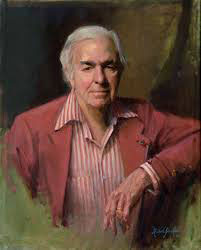 I have always, in some ways, put an equal weight in my interest in getting to know people and understanding them, and then trying to interpret them so the portrait looks like them on a flat surface. Art has been a part of my entire life, and I have always had an intense interest in people and in painting them; it’s been one of my main drives, or as Ray Kinstler would say, working on “the next victim.”
I have always, in some ways, put an equal weight in my interest in getting to know people and understanding them, and then trying to interpret them so the portrait looks like them on a flat surface. Art has been a part of my entire life, and I have always had an intense interest in people and in painting them; it’s been one of my main drives, or as Ray Kinstler would say, working on “the next victim.”
In regard to the challenges, I think I'm always challenged in every way by the technical aspect of painting, by the materials, and what I think I can get out of them, about what they could or should achieve. I sometimes feel limited and ask: “Why is a certain pigment not working or is it my own proficiency in my trying to get something down to come close to what I’m envisioning?” And it doesn’t get any easier. I have talked to older artists, and they tell me that it’s actually a healthy place to be. As an artist, I’m always pushing myself, expecting more of myself, determined that it’s got to be better.
When you begin a new painting, what thoughts come floating through your mind?
Edward Albee by Michael Shane Neal
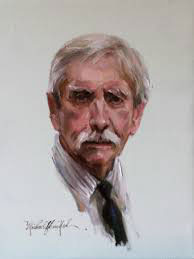 Terror is the first thing. You look at a big blank white canvas, and the greatest fear is the moment you start and then the problem-solving begins. How do I get into the painting? I’m less intimidated once I’ve started.
Terror is the first thing. You look at a big blank white canvas, and the greatest fear is the moment you start and then the problem-solving begins. How do I get into the painting? I’m less intimidated once I’ve started.
Did you have a desire to express yourself through paint at an early age?
My earliest memory was drawing and sculpting when I was about three or four years old. I had the unrelenting desire to make things out of clay or to draw or to try to paint. I have always been trying to create things.
When I was fifteen I began seeing painters on public television and I thought I’d love to do that. I had gotten a job working in a store, and after I had saved my first three paychecks, I went to the art store and bought my first paint set.
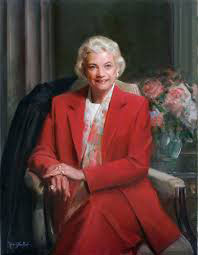 There really weren’t any other artists in my family, there were a lot of musicians, and I had an uncle who could draw, and I began to receive encouragement but I didn’t really know how to start. The first day I tried to paint, I set up my canvas and paint, but I had bought a presentational easel, so when I put my first stroke on the canvas, everything came crashing down. I ended up duct-taping its feet to the floor, so it was really a modest beginning.
There really weren’t any other artists in my family, there were a lot of musicians, and I had an uncle who could draw, and I began to receive encouragement but I didn’t really know how to start. The first day I tried to paint, I set up my canvas and paint, but I had bought a presentational easel, so when I put my first stroke on the canvas, everything came crashing down. I ended up duct-taping its feet to the floor, so it was really a modest beginning.
When were you first introduced to your mentor’s work, Everett Raymond Kinstler?
Chief Justice Sandra Day O'Connor by Michael Shane Neal
In 1977, as a boy, when I went on a trip with my parents to Washington, D.C., and we did the White House tour. I was able to get a souvenir booklet of all the portraits of the presidents, and when I looked at the portrait of Gerald Ford, painted by Kinstler, I knew there was something about it that was so different. It appeared to me to be more painterly, more expressive.
Ten years forward, I’m studying with the artist, Dawn Whitelaw. She was my first painting instructor, and it was at one of her workshops in Maine I first learned who Ray Kinstler was. She told me “You have a natural painterly style, his painting would appeal to you.” As soon as I could I went to the library and found his book, “Painting Portraits,” and sat there reading, and never stopped. I must have checked that book out at least five or six times. That first day, as I walked down the steps of the library, I said to myself: “I would love to paint like this.”
Michael Shane Neal with Supreme Court Justice Sandra Day O'Connor
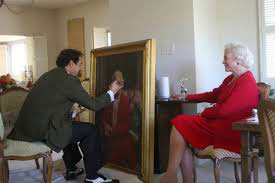
A couple of years later, in 1990, by that time I had developed a huge affinity for Kinstler’s work and for the master painter, John Singer Sargent, it was by chance or fate, I was introduced to a friend of Kinstler. She told me she would be happy to talk to him about me, and gave me his personal phone number. When I finally called Ray, he said, “The next time you're in New York, give me a call.”
At that time, Ray was just beginning his relationship with Peggy, which is now twenty-five years ago, and he was just leaving town when I finally got to New York City. So he asked me to send him a few photos of my paintings, which I did. I also included a little charcoal drawing I did of him.
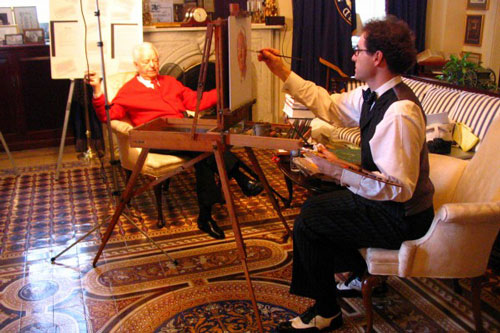
Michael Shane Neal painting Senator Robert C. Byrd
Well, when they got back to town, Peggy showed Ray the large envelope I had sent, and when they looked at my address, he told her, “I don’t know anyone in Nashville.” But after they opened the package and he saw my little drawing of him, and my work, he seemed to take an interest in me - and now it’s been over twenty-five years since our friendship began.
How would you describe the impact he has had creatively on your work?
It has affected my growth as a person; he’s been a “father- figure” to me. Whether you’re an actor or a writer or a painter, the world is so different when you have someone who takes an interest in your work. I was craving to know what it was like to be an artist; I had never walked into an artist’s studio. Suddenly I meet a person who takes an interest in my development, it was life-changing.
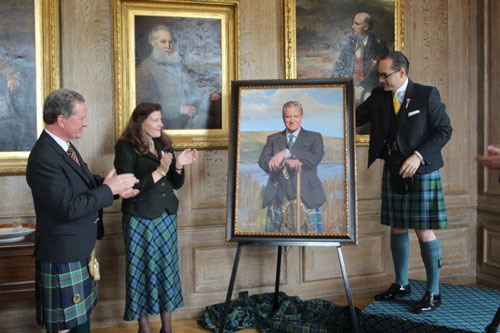
offical portrait of Sr. Malcolm Colquhoun, 9th Baronet, 31st of Colquhoun,
33rd Laird of Luss Scotland
He gave me advice, showed me how he developed his skills; in many ways, I learned my skill “at the masters’ feet.” I learned how he kept at the top of his career, how he developed his work to get such expressive portraits.
I learned a lot of it has to do with being a “people person.” One of the pre-requisites to being a portrait painter is you need to spend time with the people you’re painting. The way Ray engages with those he has painted, it changes the outcome of the painting; I’ve watched him for years. He has changed me in the way of appreciating the people I paint.
Even at ninety years of age, he goes into his studio every day with a deep kind of commitment, with will power and determination.
When you were painting your portrait of Mr. Kinstler, you quoted the artist, Robert Henri, who said: “You have to find a good place to stop.” You’ve also said: “The portrait is a memory, a record of this time and this place in my life…” We see this also in portraits by Rembrandt, Goya, El Greco, Le Brun, Van Gogh, Gilbert Stuart, John Singer Sargent, among others. Is that what you’re striving to reveal through your portraits?
I do hope that each of my portraits has a feeling of the personality of the person as much as their external likeness. There is also another level which goes beyond, like the portraits Ray Kinstler does. You see it, for example, in the portrait he did of John Wayne, in the way in which he painted his eyes. Kinstler has said the features are not exact measurements, yet what he got is who John Wayne was.
With each of my portraits, I strive to capture a feeling of what it would be like if you were to meet that person. It’s a step beyond just doing a portrait. It comes from an intuitive reaction one has. I’m after a bigger impact than just a surface representation of the person.
Do you prefer to use a particular canvas and brush?
I’ve been using the same canvas for years, which is also the same canvas Ray Kinstler uses. It’s made by a company named A.E. Art Canvas - I use number ninety on their list. It’s a single-lined linen, which thrives when you use a variety of colors.
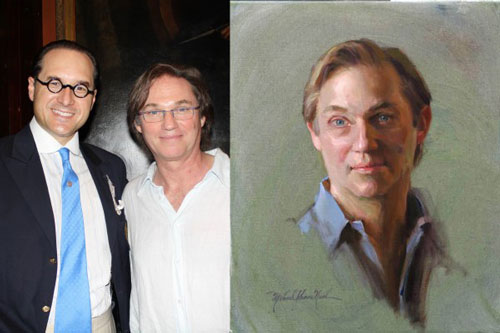
Michael Shane Neal with Richard Thomas and Mr. Neal's portrait
I prefer Silver Gran Prix brushes and the Rosemary brushes collection. I like using a filbert brush, which I feel is the most versatile of all the brushes I use. I always lean to using larger brushes to get more of a broad stroke.
You’ve also done some very striking landscape paintings. What draws you to want to paint a particular scene you find in nature?
Usually it’s driven by the light I see. It might even be the lack of light, or the harshness or coolness on water or how light is striking an object. I'm attracted to color and light, or a combination of shapes may appeal to me. It might also be an infinity for a landscape I see before me. My family is Scottish, and I just love the landscape in Scotland; its coolness and how it makes me feel, so I try and capture it.
What keeps you curious, growing as an artist, and is that part of what makes you a good portrait painter?
I think that kind of curiosity will never leave me. I’m always curious about who the next person will be that I’ll paint, and what can I understand about them; I’m always eager to learn something deeper.
I feel that painting portraits is very much like how an actor prepares for a role on stage. I become totally focused on understanding who they are, how they talk and sit in a chair, their gestures and mannerisms, how they walk, their pace of movement and speech, how they wear their clothes. Sometimes I find I’m so in tune with my subjects that once they leave the studio I find I can do a pretty good impersonation of them. I’m always fascinated by what drives them, by what has made them who they are.
I’ve been fortunate to paint people in my career who are the best at what they do, and that this has led to their having a portrait done of them. A professor once remarked to Ray, “I may have a double Ph.D,, but you’ve gotten an education beyond my wildest dreams, getting to know all the subjects you’ve painted. It’s probably equal to a double Ph.D!”
I feel it’s true when an artist works to “peel back the layers of onion” of the subject matter before him through the creative pursuit. I think so often about John Singer Sargent, when he was looking at Rembrandt’s work and I’m paraphrasing: “I know what Rembrandt's saying with his painting but I have no idea how he did it.” Thats the thing that rivets me in the pursuit of understanding. • x\

























